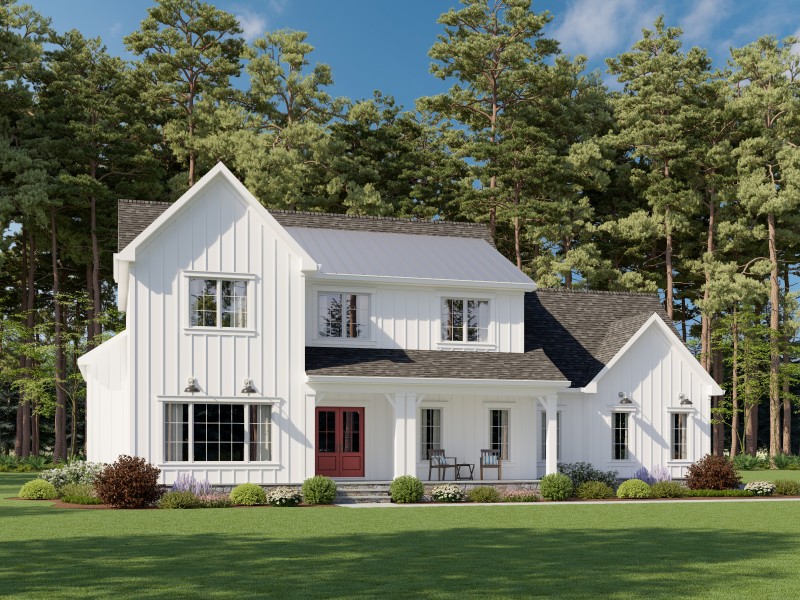Building your initial home can be an exhilarating yet intimidating journey. With countless decisions to make, from selecting the right blueprint to managing a budget, the journey can feel overwhelming. Yet, with the right guidance, you can maneuver through the complexities of new construction with confidence. This detailed resource is designed for beginner homebuilders, providing a detailed roadmap from preparation and layout to the ultimate touches before taking possession.
Regardless of whether you are debating between constructing a custom home or choosing for a ready-made model, understanding the ins and outs of the building procedure is crucial. You will discover about the multiple stages of building, how to select the best materials, and the importance of intelligent house technologies. Armed with information about budgeting and financing, as well as tips on steering clear of common mistakes, you will be well-equipped to create the home of your desires. So prepare your arms and let's embark on this exciting adventure as a team.
Understanding this Housing Process

Creating an brand-new residence represents a thrilling undertaking which involves multiple phases, beginning with primary preparation and layout up to the touches prior to moving in. The housing process generally starts by determining one's financial plan, picking an appropriate site, as well as employing a architectural professional or home builder. In web , it's crucial for you to gather every necessary information about land use regulations as well as construction permits, making sure that one is on schedule for an hassle-free building journey.
After these blueprints have been approved, this building phase kicks off. It involves pouring the foundation, raising the building, setting up plumbing as well as electrical systems, and completing both the outer and interior work. Each step in the procedure requires meticulous attention on details and conformity with timelines, because setbacks can cause increased expenses along with extended deadlines. Being knowledgeable as well as regularly communicating with the construction team might assist reduce potential problems.
Ultimately, the construction procedure wraps up in last verification, revisions, along with the crucial walk-through prior to occupying. This stage allows one to verify that all features satisfies your expectations and conforms to the mutually agreed specifications. Through comprehending these intricacies of the homebuilding process, first-time homeowners are able to steer through their construction journey with conviction while also achieve the home of their dreams dream home.
Financing and Financing Your Build
Creating a practical budget is vital when planning your new home construction. Begin by determining the total costs, which include property, supplies, labor, and permits. It's vital to consider additional expenses such as gardening, utilities, and furnishings. By calculating these costs in advance, you can avoid surprises later in the project and ensure that your ideal house remains financially viable.
When it comes to funding your project, different options are available to first-time home builders. Building loans are specifically designed for homebuilding, allowing you to access funds in increments as each phase of construction is finished. Investigate lenders who specialize in building loans and compare loan rates, loan terms, and fees. Make sure to gather all essential documents to simplify the application process and increase your odds of getting approved.
Hidden costs can sneak up on you during the construction process, making it paramount to include buffer costs in your budget. These can include site preparation, changes in material prices, and unexpected repair work. Allocate a percentage of your budget—typically 10 to 20 percent—to cover these potential overruns. By being proactive and planning for possible additional expenses, you can manage your finances and keep your build on track.
Opting Suitable Materials as well as Style
Picking suitable materials plus design for the new home is vital for both aesthetics plus functionality. Start by considering the climate as well as environment; materials must endure local weather conditions. For illustration, durable materials like masonry or render can provide superior insulation in chilly areas, while wood offers a traditional look plus natural warmth. Investigating the latest design trends can also motivate your decisions, facilitating you to create a space that is both modern as well as personalized.
When it comes to exterior finishes, investigate the alternatives available as well as consider the pros and cons. Stone is known for its endurance and low maintenance, while wood offers a everlasting appeal but may call for more upkeep. Render provides a adaptable as well as stylish appearance but should be properly treated to prevent moisture issues. Any the choice, ensure it corresponds with your design vision, budget, plus maintenance requirements.
The internal design should also mirror the lifestyle and preferences. Think about energy-efficient materials to lower utility bills, plus choose flooring options that combine style with durability. Smart home features are increasingly popular, enhancing ease plus energy management. Collaborating with a professional designer can help you navigate these choices, ensuring your new home is a flawless blend of comfort, style, as well as sustainability.
